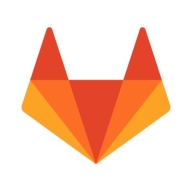

Red Hat Ansible Automation Platform and GitLab compete in the automation and DevOps categories. Ansible's agentless model offers simplicity and speed for orchestration tasks, while GitLab's CI/CD integration gives it a competitive edge in comprehensive software development processes.
Features: Red Hat Ansible Automation Platform stands out with its agentless architecture, ease of use, and broad documentation. The system's agent-free design leverages SSH for connectivity, allowing for simpler orchestration across varied environments. Its extensive community support provides a wealth of resources for users. GitLab excels in repository management with strong CI/CD capabilities, integration between repositories and deployments, and an intuitive interface for efficient code reviews. The solution allows effective collaboration on projects through its repository-centric model.
Room for Improvement: Ansible could improve scalability and efficiency when dealing with numerous servers by refining SSH connection use. Enhancements in GUI design and package integration are also needed. GitLab can benefit from improving third-party tool integration and simplifying certain complex functionalities. Addressing these areas will help both platforms provide smoother operations and greater efficiency.
Ease of Deployment and Customer Service: Ansible is versatile in both cloud and on-premises deployments, benefiting from robust community support and comprehensive documentation. GitLab, while strong in cloud environments, may face integration challenges. Both platforms offer substantial customer support, with GitLab noted for its efficiency and Ansible backed by detailed documentation and community resources.
Pricing and ROI: Ansible's open-source nature ensures cost-effectiveness, with costs incurred mainly for features like Ansible Tower. Its ROI is achieved through enhanced automation efficiencies. GitLab offers a free tier, but premium features are costly, though justified by extensive integrations and functionalities. Ansible's pricing is straightforward, while GitLab's tiered structure could be restrictive for smaller teams despite its feature set.
Migrating to GitLab is bringing time-saving benefits, and everything is easier to automate.
We have saved time significantly, reducing deployment time from four hours to five minutes per deployment.
We have rarely needed to escalate issues to technical support since GitLab usually runs seamlessly.
I have interacted with architects for some advice during the implementation, and they were prompt in their response.
I have had meetings where they taught me, explained things, and provided guidance for starting from scratch.
The Ansible sales and technical support services need significant improvement.
I have not escalated any questions to the Red Hat support team regarding Red Hat Ansible Automation Platform, as their modules are professional and complete.
It has all the features required for our coding and deployment needs, which makes it scalable to our changing requirements.
We're transitioning to OpenShift for future scalability with increased user numbers.
For scaling, other deployment options from GitLab's side need to be adopted.
Ansible can face scalability issues, such as limitations when trying to scale up infrastructure.
I have not encountered any performance or stability issues with GitLab so far.
The updates are frequent and demanding, happening at least once a week due to security reasons.
We raised a request with GitLab support, but they were unable to help because they could not find the root cause of what went wrong.
The stability of Red Hat Ansible Automation Platform is excellent, deserving a 10 out of 10 rating.
It would be beneficial to have a user-friendly interface for setting up these configurations, instead of just writing YAML files.
It is essential to conduct proper testing, such as unit tests and code coverage, within the SDLC pipelines.
GitLab can improve its user interface to make conflict resolution more user-friendly.
The dashboarding capabilities should be improved by bringing CMP (Cloud Management Platform) into Red Hat Ansible Automation Platform.
Red Hat Ansible Automation Platform could improve by creating modules for upcoming AI and ML tech stacks.
More library support for microservices architecture and Kubernetes would be helpful.
Even when working in other small organizations, we opted for GitLab as it was cost-efficient.
The pricing of GitLab is reasonable, aligning with what I consider to be average compared to competitors.
The price is high, and it limits user accessibility.
The pricing is high, and since I'm not using all functionalities, it would be better if the price depended on the functionalities used.
The cost of combining Red Hat Developer Hub and Ansible is extremely high, which presents a significant challenge with the Red Hat product.
It is free and open-source for testing or small labs.
As we implement automated testing and DevSecOps, it speeds up the process by forty to sixty percent.
The Ultimate version offers enhanced features for security scanning through DAST and SAST analysis, which have greatly benefitted our project workflow.
By integrating GitLab as a DevOps platform, we have enhanced agility, improved our time to market, and different teams can work collaboratively on various projects.
The agentless architecture of Red Hat Ansible Automation Platform, using the SSH key, makes it passwordless and allows us to push configurations with one click, creating a major advantage.
The automation capabilities streamline deployment processes, providing reliability and reducing manual intervention and errors.
It makes it simple to develop Ansible playbooks and roles, which aids in simplifying my daily administrative tasks.
| Product | Market Share (%) |
|---|---|
| GitLab | 29.4% |
| Red Hat Ansible Automation Platform | 5.0% |
| Other | 65.6% |


| Company Size | Count |
|---|---|
| Small Business | 35 |
| Midsize Enterprise | 9 |
| Large Enterprise | 42 |
| Company Size | Count |
|---|---|
| Small Business | 24 |
| Midsize Enterprise | 8 |
| Large Enterprise | 48 |
GitLab offers a secure and user-friendly platform for CI/CD pipeline management, code repository control, and collaboration, enhancing development speed and efficiency. It facilitates automation with extensive customization and tool integration, ideal for DevOps processes.
GitLab supports source code management, version control, and collaborative development. It's frequently used in CI/CD processes to automate builds and deployments while integrating DevOps practices. GitLab allows companies to manage repositories, automate pipelines, conduct code reviews, and maintain development lifecycles. The platform supports infrastructure and configuration management, enabling efficient code collaboration, deployment automation, and comprehensive repository handling. Many organizations commit and deploy developed code using GitLab's capabilities.
What are GitLab's most valuable features?In specific industries, GitLab serves as a backbone for source code management and CI/CD implementation. Companies leverage its capabilities for infrastructure management and deployment automation, thus streamlining project delivery timelines. Its ability to handle configuration management and code repositories effectively aids in maintaining development lifecycles, making it a preferred choice for organizations committed to enhancing their DevOps practices.
Red Hat Ansible Automation Platform streamlines IT operations with features like a simplified GUI and extensive module support. Its agentless architecture and YAML ease make it an adaptable choice for managing diverse infrastructures efficiently.
Red Hat Ansible Automation Platform offers a robust automation framework that supports multiple environments and integrates well with various applications. Its agentless Python-based architecture facilitates efficient server management and rapid update deployment. Users benefit from centralized management through Ansible Tower, role-based access control, and dynamic inventory. However, improvement areas include documentation, API integration, network support, and UI scaling. Enhanced community contributions could address module availability and compatibility gaps.
What are the most important features of Red Hat Ansible Automation Platform?In industries like finance, healthcare, and technology, Red Hat Ansible Automation Platform is used for network management, security compliance, and configuration tasks. Organizations utilize its capabilities for cloud and on-premises deployment, infrastructure provisioning, and workflow orchestration. Many integrate it with tools such as Puppet or Terraform to enhance CI/CD processes, benefiting from its agentless design in adapting to cloud environments.
We monitor all Release Automation reviews to prevent fraudulent reviews and keep review quality high. We do not post reviews by company employees or direct competitors. We validate each review for authenticity via cross-reference with LinkedIn, and personal follow-up with the reviewer when necessary.